Shimla: A Journey Through the Colonial Heritage of India's Beloved Hill Station
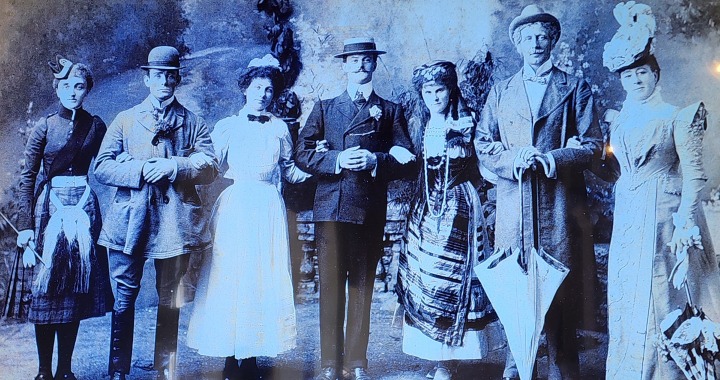
Nestled at an elevation of 2,250 meters (7,380 feet) in the northwestern Himalayas, Shimla, the capital of Himachal Pradesh, is a gem of colonial India. Once a quaint village known as "Shyamla," a name derived from the Hindu goddess Kali, this hill station evolved into the Summer Capital Of India during the British Empire, leaving behind a legacy that still resonates through its streets, buildings, and cultural tapestry.
Read more about Shimla in our blog post Explore Shimla: Travel Guide to Top Places to Visit, Best Things to Do, and Must-See Attractions
Origins and Early British Influence
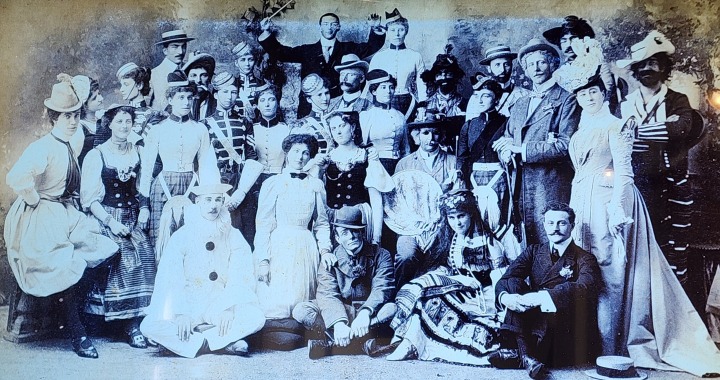
The first recorded description of Shimla, then a modest village, appears in 1817 in the diary of Scottish officers Lt. Patrick and Alexander Gerrard (Brothers). Historical records reveal that during the 18th century, Shimla was part of the Keonthal and Patiala states, within the Punjab Province.
The history of Shimla intertwines with the Anglo-Gurkha War of 1808-09, which marked the beginning of British interest in the region. Before British involvement, Shimla, along with regions like Almora, Kumaon, Garhwal, Sirmaur, Dehradun, Kangra, Sikkim, and Darjeeling, was invaded and captured by Prithvi Narayan Shah of Nepal. These areas, previously ruled by various local hill chiefs, fell under the expansionist ambitions of the Gurkhas.
The Gurkhas, notorious for their brutal tactics, posed a significant threat to both the local population and the ruling chiefs. In response, the Sikh rulers and local communities sought assistance from the British East India Company. Major General Sir David Ochterlony was dispatched to lead the British forces in a campaign to liberate the hills from Gurkha control. The conflict culminated in a fierce battle at the Ramgarh Fort near Nalagarh, followed by a decisive engagement at the Malaon Fort, where the combined forces of the Sikh and British armies defeated the Gurkhas, killing their leader, Bhagat Thapa, and capturing the fort.
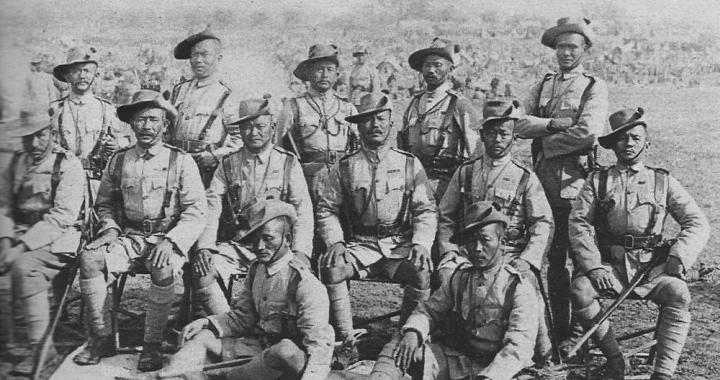
The "Battle of Malaon" on May 15, 1815, marked the end of Gurkha aspirations to rule Shimla and the surrounding hills. In recognition of their valor, the British established the First Gurkha Rifles regiment in the very fort they had captured.
Shortly thereafter, an official declaration was made, restoring the lands of hill chieftains who had allied with the British against the Gurkhas, under British protection. The Maharaja of Patiala (Punjab Province), who had also rendered valuable services to the Britishers, was rewarded with the neighborhood of the area now compromising Shimla.
The conclusion of the war was formalized by the Treaty of Sugauli in 1815, which resulted in the cession of numerous territories in North and Northeast India (some parts of Sikkim and Darjeeling Hills), including Shimla, to the British East India Company. Key strategic forts such as Subathu, Kotgarh, Ramgarh, and Sandoch came under British control, and the British ensured safe passage for the defeated Gurkhas back to Nepal.
Shimla’s Rise as a British Summer Retreat
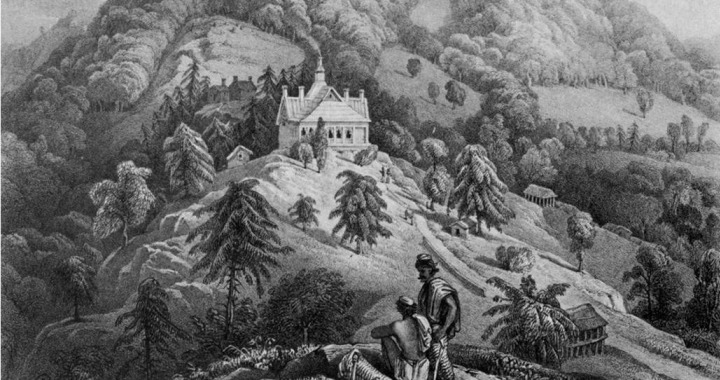
1822: Shimla remained largely unnoticed during the Anglo-Gurkha war, but that changed in 1822 when Lt. Charles Patt Kennedy, then the Superintendent of the hill states, visited the small village of “Shyamla” (later known as Simla). He built the first British house in Shimla, which is still known today as "Kennedy House," now housing several government offices. He was sent to receive tribute from the hill chiefs and establish some traditional British laws and order among them.
As British officers began visiting Shimla for summer holidays and hunting expeditions, they were captivated by the region’s cool climate, which reminded them of European weather. The forests around Shimla were teeming with wildlife, including hyenas, bears, leopards, barking deer, jackals, and the beautiful Himalayan pheasants. For many British officers unable to return to England, Shimla became a much-needed escape not just from the sweltering heat but also from the culture of the Indian plains.
In those days, if an English officer couldn’t take an extended leave to England, he would instead retreat to Shimla.
1827: Word of Shimla’s appeal quickly spread. In 1827, Governor-General of Bengal( 1823-1828) Lord Amherst visited and set up a summer camp at Kennedy House, bringing with him 1,700 porters and staying for two months. At the time, there was only one cottage in Shimla, and by the time he left, there were just only 'half a dozen' more. His visit laid the foundation for Shimla's prominence, and it was at Kennedy House that he famously remarked, "The Emperor of China and I govern half of the human race, and yet we find time for breakfast."
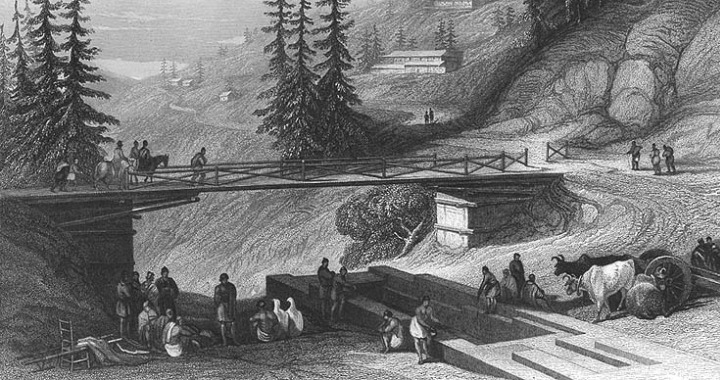
1828: In 1828, Lord Combermere, became the first Commander-in-Chief of the British forces in India, to visit Shimla. He took a keen interest in the town’s development, overseeing the construction of a pine wood bridge over a deep stream below Jakhoo Hill. This was the first significant development activity in Shimla by the British, and the bridge, though much altered, is still known as Combermere Bridge, with a nearby hotel bearing the same name Hotel Combermere after Lord Combermere.
1830: By 1830, the British government decided to acquire land around Shimla. Lt. Charles Patt Kennedy, now a Major, was tasked with negotiating with the hill chiefs of the Keonthal and Patiala states.
1832: Following the land acquisition, Lord William Bentinck, the next Governor-General of Bengal (and later the first Governor-General of India), visited Shimla in 1832. A residence, Bentick Castle (Bantony Castle), was constructed for him, which later served as the residence for the Commander-in-Chief.
In a letter to Colonel Churchill in 1832, Bentinck wrote: "Simla is only four days’ march from Loodianah (Ludhiana), is easy of access, and proves a very agreeable refuge from the burning plains of Hindoostaun (Hindustan)."
1837: The Queen, Victoria ascended the British throne in 1837 and her tenure was marked by strict regimentation and court etiquette. A large number of British officers, who were not disciplined, were packed off to India. To such officers, Shimla offered an ideal setting.
1838: Lord Auckland arrived in Shimla in 1838. "Auckland House" near Longwood hill, was the residence for him and the important decision to invade Afghanistan was taken in Shimla in the same house by him. Ironically, after four years the decision to invade Afghanistan was criticized in the same house “Auckland House” in the same room and on the same day by Lord Ellenborough, who recognized the right of self-determination for the people of Afghanistan.
1849 - 1852: During the annexation of Punjab, Lord Dalhousie spent three summers (1849-51) in Shimla. He explored remote parts of the Himalayas, including the village of "Chinni" (now Kalpa in Kinnaur Valley, Himachal Pradesh), and revisited the idea of a trade route to Tibet first envisioned during the Anglo-Gurkha war. Construction of the "Hindustan-Tibet Road" began during his tenure, with the first stretch completed between 1850 and 1851. This road, which included a 560-foot tunnel beyond Sanjauli Bazaar, was opened to wheeled traffic by 1860 and Sanjauli tunnel remains in use today.
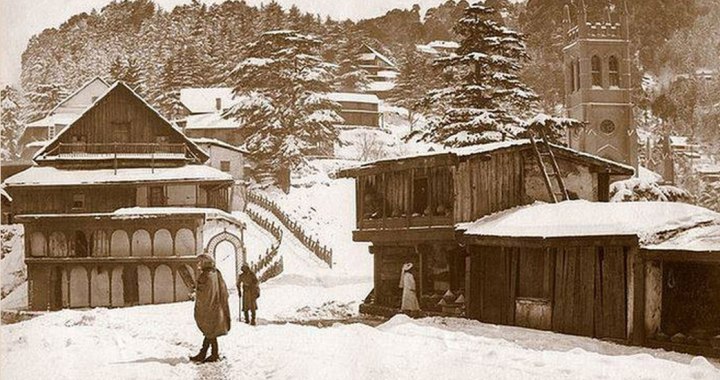
Shimla's early development also saw pioneering foreign merchants setting up shops along the Mall Road. These shops, owned mostly by British traders, sold goods imported from London and were affiliated with the "Punjab Traders Association" headquartered in Lahore. Among the first recorded businesses was Messrs Barret & Co., a butchery that later expanded to include Shimla’s first billiard room, a racquet court, and eventually became a founding member of the Old Shimla Bank (now the Grand Hotel).
Williams Edwards, Shimla Deputy Commissioner and Suprintendenof the hillsfrom 1847 to 1852 was a man with possitive vision and he introduced westren schools in the hills. For this purpose he collected the funds from the local rulers.
The Shimla Municipality, established in 1850, became the oldest municipality in Punjab, marking the town’s growing significance.
The Establishment of Shimla as the Summer Capital
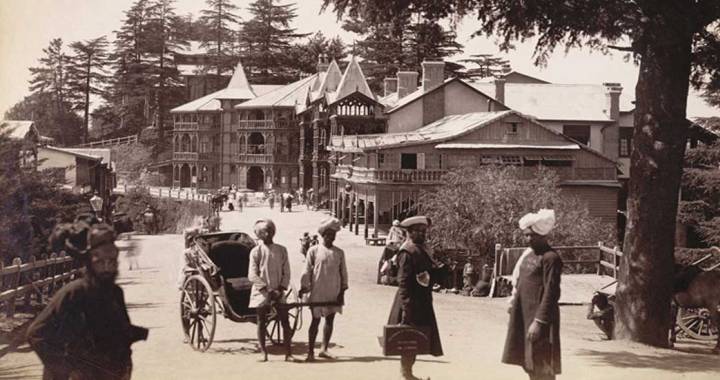
Lord Canning, the last Governor-General and the first Viceroy under the Crown (the title was changed from Governor-General to Viceroy during his tenure on November 1, 1858), visited Shimla in 1860. He was succeeded by Lord Elgin, who unfortunately passed away in 1863. Following Lord Elgin's sudden death, Sir John Lawrence was unexpectedly appointed Viceroy in 1863.
Sir John Lawrence, who served as Viceroy of India from January 12, 1864, to January 12, 1869, took the significant step of relocating the administration twice a year between Calcutta and Shimla—a distance of over 1,000 miles. In 1864, Sir John Lawrance officially declared Simla the Summer Capital of India. Typically, the administrative move to Shimla occurred in early April, with the return to the plains taking place in early November. During this period, the entire Indian subcontinent was governed from Shimla.
In a letter to the Secretary of State, Mr. Charles Wood, Sir John Lawrence strongly advocated for shifting the capital, citing the following reasons:
"Of all the hill stations, Shimla seems to me the best for the supreme government. Here you are with one foot, I may say, in Punjab and another in the Nrth- west provinces. Here you are among a docile population and yet near enough to influence Oudh. Around you in a word are all the warlike races of India, all those on whose character and power, our hold in India, exclusive of our countrymen, depends…. Nowadays, you have no large native army to fear. What you have on this side of India, you have mainly around and about you, so that your Governor- general, if he has any discernment, is well placed to perceive the first sign of danger and is then able to apply a remedy".
Simla A Hub of Colonial Power and Culture
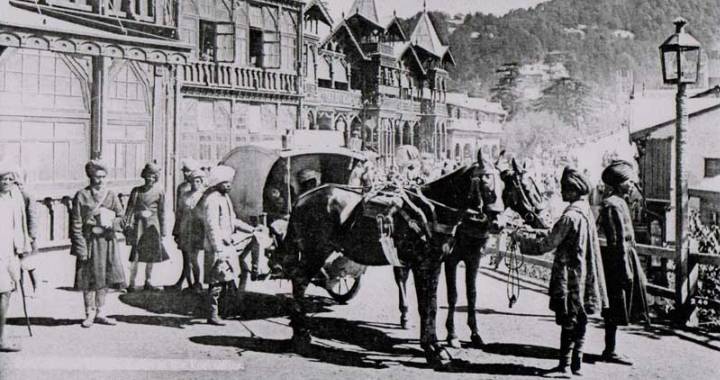
Simla served as the Headquarters of the Commander-in-Chief of the British Indian Army, along with several key government departments. The decision to establish the Army headquarters in Shimla was strategic, considering its proximity to Punjab and the North-West Frontier Province (now part of Pakistan and Afghanistan). The headquarters remained in Shimla until 1941 when they were relocated to Delhi, nearly a decade after the National capital was moved from Calcutta to Delhi on February 13, 1931.
Simla was also the summer capital of the regional government of the undivided state of Punjab. From 1871 to 1873, the offices of the Punjab government shifted to Shimla for about five months each year. This practice became an annual routine starting in 1876, continuing until the partition of British India in 1947, which divided Punjab between India and Pakistan.
Between July 1942 and 1945, Shimla housed the headquarters of the exiled Burmese government, with its various offices scattered across different buildings in the town.
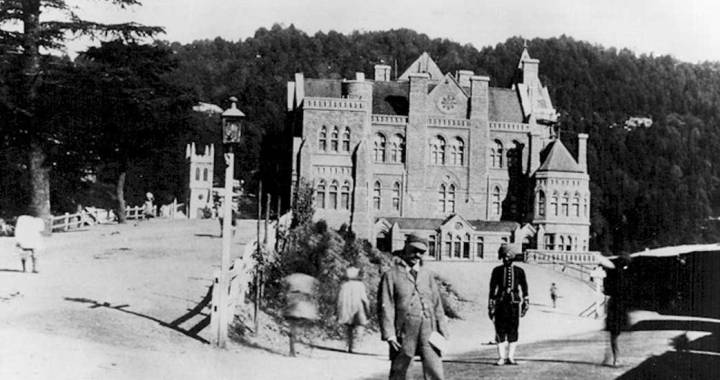
The Shimla District Gazette of 1888-89 highlights the rapid growth of the settlement: from 30 houses in 1830, the number increased to 100 houses by 1841, 290 houses by 1866, and 1,141 occupied houses by 1881. As Shimla's popularity grew and visitors increased, the demand for local transportation led to the introduction of "Jampans" (hand pulled rickshaws).
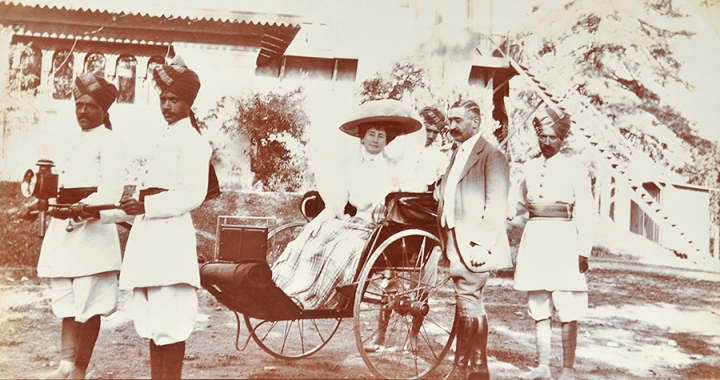
In 1876, Lord Lytton, then Viceroy of India, visited Shimla and stayed at Peterhoff, the official residence of the Viceroys at the time. Dissatisfied with the small size of Peterhoff, he selected a new site on Observatory Hill in the western part of Shimla to construct a new Viceroy's residence, now known as the Indian Institute of Advanced Study.
Peterhoff later became the location of the Punjab High Court, and it was here that the trial of Mahatma Gandhi's assassins, including Nathuram Godse, took place. Godse was sentenced to death on November 8, 1949, and hanged at Ambala Jail (now in Haryana) on November 15, 1949, along with Narayan Apte, another conspirator.
The United Services Club Simla (U.S. Club), established in 1844, was reserved exclusively for defense personnel. Women were not permitted, even as guests. In 1890, the Chalet was constructed to allow members to entertain ladies.
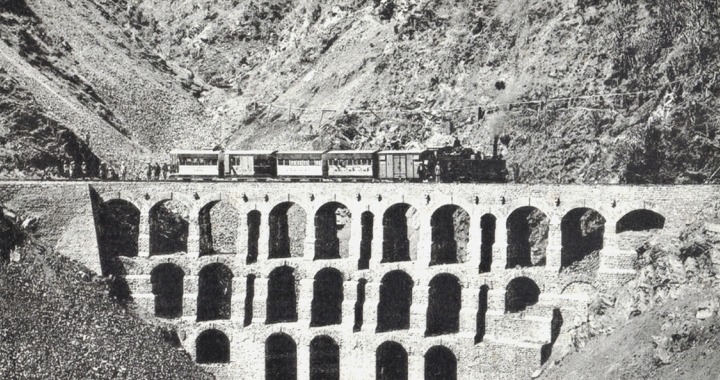
The opening of the Kalka-Shimla Toy Railway line on November 9, 1903, further enhanced Shimla's accessibility and popularity. The idea of a railway line to Shimla dates back to the early days of railways in India. In November 1847, a correspondent in the Delhi Gazette proposed a route for a railway to Shimla, predicting that it would make these cooler regions a permanent seat of government, revitalizing the European constitution and benefiting both rulers and the ruled. Lord Curzon played a crucial role in expediting the construction of the railway. The Kalka-Shimla route, featuring over 806 bridges and 103 tunnels, was hailed as an engineering marvel and became known as the "British Jewel of the Orient."
Read more about Kalka Shimla Toy Train in our blog post "Exploring the History of the Kalka-Shimla Railway: A UNESCO Heritage Toy Train Journey"
Post-Independence Simla (Shimla)
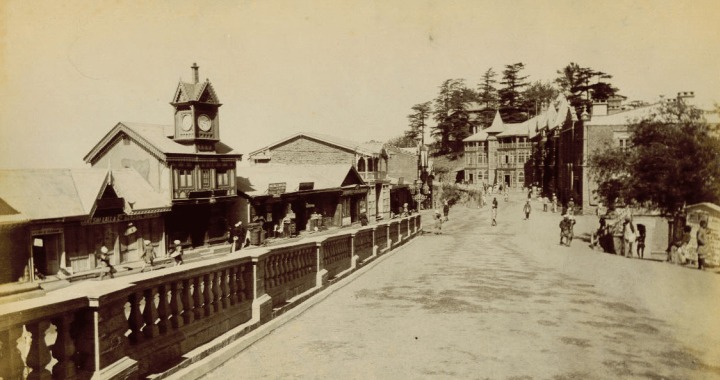
Shimla holds a significant place in the history of India's struggle for independence. It was here that the foundations of the Indian National Congress were laid, with A.O. Hume playing a crucial role in its conception. Additionally, Shimla played a pivotal role in the early development of the All India Muslim League, which became the primary voice for the Muslim community during the nationalist movement. The idea of forming the Muslim League gained momentum after a delegation of prominent Muslim leaders met with Viceroy Lord Minto in Shimla. This meeting led to the first formal recognition of the Muslims' demand for separate representation, a milestone that was achieved in Shimla in 1906.
In 1945, Lord Wavell, then Viceroy of India, convened the historic "Shimla Conference" in an attempt to break the deadlock between the Indian National Congress and the Muslim League regarding the future governance of India. The following year, from May 5th to May 12th, another crucial meeting took place in Shimla between the Cabinet Mission and representatives of the Congress and the Muslim League. This meeting was pivotal in shaping the future of the Indian subcontinent.
Once it was decided that British India would be partitioned into two separate nations, India and Pakistan, a Boundary Commission was established to demarcate the borders. Sir Cyril Radcliffe was appointed as the Chairman of the two Commissions for Bengal and Punjab. The draft of the partition plan was drawn up in Shimla, within the walls of the Viceregal Lodge. Although the final agreement was signed in the Presidential House in New Delhi, Shimla played an integral role in the process.
The partition of British India, which led to the creation of India and Pakistan on August 14th and 15th, 1947, respectively, marked a new chapter in Shimla's history. Following independence, Shimla became the capital of what was then known as "East Punjab." On Independence Day, the Indian tricolor was proudly unfurled outside "Ellerslie," the Secretariat of the Punjab government in Shimla, symbolizing the dawn of a new era for the nation.
Present-Day Shimla: Bridging Past and Future
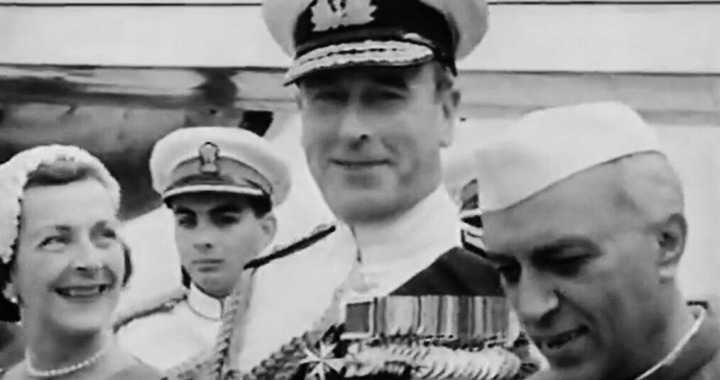
Himachal Pradesh was officially established as a "Chief Commissioner's Province" of the Indian Union on April 15, 1948, following the merger of 30 princely states from Punjab and the Shimla Hills. Even after the partition, Shimla remained the capital of Punjab (which stayed within India) until the creation of Chandigarh in 1953. On November 1, 1966, Punjab underwent reorganization, leading to Shimla becoming part of Himachal Pradesh and serving as its capital. Himachal Pradesh remained a Union Territory until January 25, 1971, when it was granted full statehood.
Shimla also played a significant role in diplomatic history as the venue for the "Indo-Pakistan Summit" following the 1971 war. Formal and informal meetings between the delegations of India and Pakistan took place at 'Ellersile' and 'Barnes Court' (the Governor's House), culminating in the signing of the "Shimla Agreement" in 1972.
While Shimla has evolved considerably since the British era, many pre-independence structures still adorn the town, standing as testaments to its colonial past. Iconic buildings like the Viceregal Lodge (now the Indian Institute of Advanced Study), Auckland House, Gorton Castle, Peterhoff, Command House, Town Hall, Christ Church, Municipal Corportaion Building, railway board building, and Gaiety Theatre continue to preserve their original architectural charm. The Gaiety Theatre is still used by local dramatic clubs, and the Wildflower Hall (1903-1909 the former summer residence of Lord Kitchener of Khartoum, the British Commander-in-Chief of the Indian Armed Forces), has been transformed into a luxury hotel, offering a glimpse into the town's rich heritage.
Today, the echoes of Shimla's storied past resonate through its streets and buildings, reminding visitors of the days of British Raj. We invite you to plan your journey with Summit Safari India and experience the best of Indian holidays, steeped in history and culture.
 Video Vlogs:
Video Vlogs:  WhatsApp: +91 9805051102
WhatsApp: +91 9805051102 Email: vishal@summitsafari.com
Email: vishal@summitsafari.com


